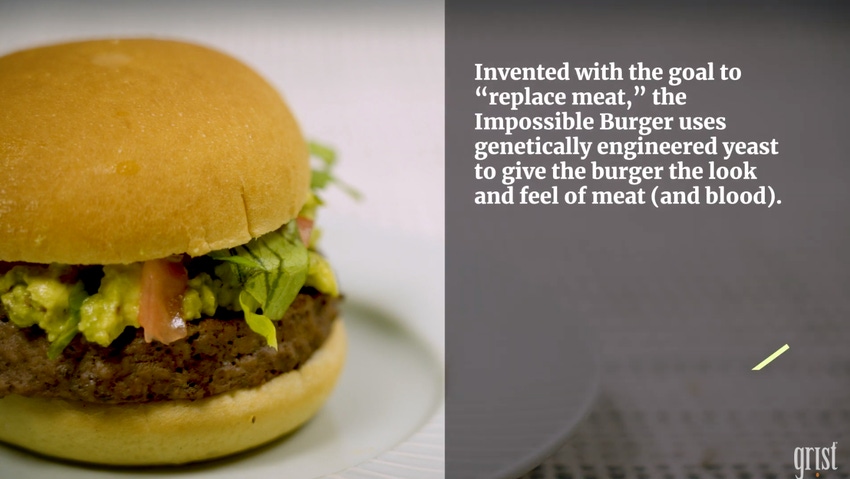Fake meats made from plants, cells & humans?
Warning — blog post may contain disturbing material about fake meats grown from human cells.
December 4, 2020

In recent years, I’ve provided updates from the meat case, where fake imitation products are inching their way into the traditional space where beef, poultry, pork and fish have been sold.
I’ve always contended that consumer choice and advancements in food science and technology are a good thing. But I also believe that transparency is critical to allow consumers to make informed choices when they are deciding what to add to their grocery cart.
And make no mistake, I don’t want to accidentally purchase a copycat substitute derived from a laboratory or plants. To ensure clarity and transparency, these products need to be clearly labeled, without hijacking our nomenclature, and designated to the vegan section of the store away from the animal products in the meat case.
Of course, that’s just my personal bias shining through. If you want to follow a plant-based diet, more power to you. I think it is critical to maintain our right to choose the diets that best fit our health and nutritional needs, our ethics and values, our budgets, our taste preferences and our personal choices.
Unfortunately, there are some who not only want to disrupt the meat case and introduce new, innovative products, but they want to eliminate our choice to enjoy animal fats and proteins. They want cattle off the range, producers off the farm and meat off the dinner table?
And these folks have come a long way from the initial introduction of the $300,000 lab-produced meat patty; however, I’ve always wondered exactly how far they would take this technology.
Turns out, they’ve got way, way too far in my book. In recent headlines, we see advancements in the fake meat movement here and around the world, and while companies are free to explore new pathways to success in a free market society, I simply must ring the bell on morality and ethics when it comes to this recent development.
A new company, called Ouroborus Steak,” will allow customers to grow their own meat using their own cells and donated blood. Cannibalism is here, I guess, but in this crazy 2020, is anybody really surprised we have sunk this low? Here’s a couple of headlines on this new company, along with a few others with updates on the general fake meat movement. Check them out and let me know what you think.
In the meantime, I’ll be over here praying for humanity. And if my appetite ever returns after reading these headlines, I’m going to go enjoy a real steak, produced from a real live steer, that grazed grass on the range and ate corn grown in a field — you know traditional, natural, wholesome beef. But I guess that’s taboo these days?
1. “Ouroborus Steak grow-your-own human meat kit is ‘technically’ not cannibalism” by Jennifer Hahn for Dezeen
“A group of American scientists and designers have developed a concept for a grow-your-own steak kit using human cells and blood to question the ethics of the cultured meat industry.
Ouroboros Steak could be grown by the diner at home using their own cells, which are harvested from the inside of their cheek and fed serum derived from expired, donated blood.”
2. “You are what you eat: DIY human steak installation ignites debate around the ultimate taboo - cannibalism” by Laura Brehaut for the National Post
Brehaut writes, “Human cells, mycelium, paper, plastic. This story starts benignly enough. But as with so many points of contention in our polarized world, it’s about context, engrained beliefs and a sliding scale of willingness to consider other points of view. A DIY meat kit is the crux of the debate — but this isn’t just any protein.
“Instead of using animal cells to produce chicken nuggets, meatballs or slices of steak, Ottawa scientist Andrew Pelling, industrial designer and scientist Grace Knight, and interdisciplinary artist, designer and researcher Orkan Telhan cultured human cells in human serum to grow blobs of, you guessed it, human meat.”
3. “1,000 years of fake meats” featured on Grist
In a video series, Grist features video footage of fake meat products. Here’s a description of the video: “We prepared six faux meat dishes from the past 1,000 years, ranging from mock lamb chops in 965 to the ‘bleeding’ Impossible Burger in 2016.”
4. “The other side of climate friendly foods” by Vibha Varshney for Down To Earth
Varshney writes, “Eating is intrinsic to every living organism. We eat what is around us, be it plants or animals, as long as we eat moderately. But now, making good food choices is progressively becoming difficult.
“Consider this. Managing the food system is now part of the new formula for fighting climate change. The food systems — that includes cultivation, storage, processing and managing waste — produce somewhere between 21-37% of greenhouse emissions.”
5. “In a global first, lab-grown chicken nuggets will soon be on the menu in Singapore” by Rasha Aridi for Smithsonian Magazine
"This is a historic moment in the food system," Josh Tetrick, Eat Just’s chief executive, tells Mike Ives of the New York Times. "We’ve been eating meat for thousands of years, and every time we’ve eaten meat, we’ve had to kill an animal—until now.”
The opinions of Amanda Radke are not necessarily those of beefmagazine.com or Farm Progress.
About the Author(s)
You May Also Like




.png?width=300&auto=webp&quality=80&disable=upscale)
